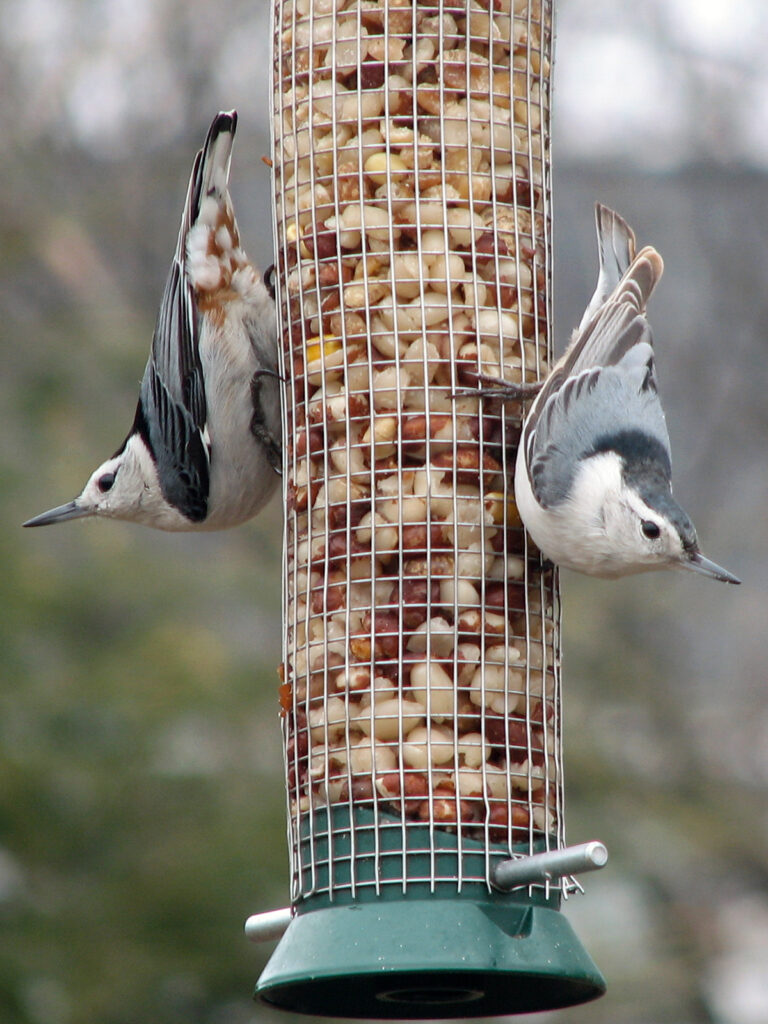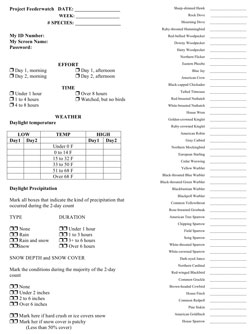
Project FeederWatch is a community science program sponsored by the Cornell Lab of Ornithology. It’s my favorite community science program and the one I’ve participated in the longest. I always look forward to mid-November when FeederWatching starts again!
And it must be one of other people’s favorites, too, since more than 20,000 people participate in it.
I started participating in this project in 2000 — even before I knew much about identifying birds. I bought a few bird ID books and spent some “quality time” leafing through them every time I spotted a bird. (Of course, this was before such useful apps as Merlin and eBird were available…)
After the first season or two, though, it became much easier as I learned what things to watch for when identifying birds. What at first were indistinguishable little brown birds soon became very distinguishable species. Learning to identify our bird visitors has made watching birds in our yard much more enjoyable. And it’s always nice to have a scientifically valid excuse for spending a bit more time looking out the window at birds!
As of the end of the ’22-’23 FeederWatch season, my Count History shows that I have counted for 23 seasons for a total of 474 counts of 57 different bird species!
How we do it
Project FeederWatch starts November 1 and continues until April 30 (a few weeks longer than it had before 2022). In this project, participants watch just two consecutive days a week (for me, usually Sunday and Monday) for whatever time I have. There’s no minimum time required; I just note how much time I spent (for me, usually less than one hour total, occasionally more).
The important rule is to keep one running tally of the maximum number of birds over the two-day period so you don’t double-count birds that may be showing up each day.

Before there was a phone app, I created a custom data entry sheet.
The phone app makes it even easier to enter info, so I no longer use this, but if for some reason people aren’t able to use a phone app, I recommend creating your own data sheet showing the birds you typically find in your yard — not every bird in your area as the generic count sheets show.
Resources
Audubon Christmas Bird Count: In December 1900, readers of the publication Bird-Lore received a call to action by Frank Chapman. He implored them to begin a new holiday tradition of counting birds, rather than shooting them, as had been tradition. Who among those readers would have imagined that 100 years later that bold new idea would have grown into the largest bird survey ever conducted? The official CBC period always runs from December 14th through January 5th.
